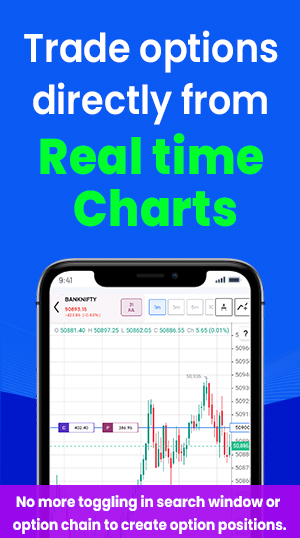In intraday trading, you can use various tools and techniques to find the best stock and choose the right level of buying and selling the underlying security. You can perform the technical analysis or use various other methods to analyse the stock price movement and find the best points to enter or exit from the trade positions with profitability.
The pivot point is one of the most popular tools you can use for intraday trading. However, traders use the pivot points not only for day trading but also for short-term trading to know the support and resistance levels of the market index or individual stocks. In this blog, we will discuss pivot points, how or whether they work for trading or not, how to calculate and use the pivot points in day trading with a pivot point intraday trading strategy.
What is Pivot Point in Intraday Trading?
Pivot points are one of the best technical tool for those who find it difficult to find support and resistance levels across time frame be it intraday or monthly.
While calculating pivot points, it leads you to finding support levels, which you will further understand in this blog.
And when price trades above or below these pivot points it gives the signal of uptrend and downtrend in the stock or in the market index. For intraday trading, you can use these pivot points to know the support and resistance levels for the day. And based on these crucial points you can decide the buying levels or define your intraday trading strategy.
Also Read: How to Do Intraday Trading: Best Stocks, Charts & Strategies
Is Pivot Point Good for Trading?
On a standalone basis, no trading strategy is complete in itself but can be improved to provide better results. Likewise pivot points can be used to provide insights about the stock price movement. Picot points can be applied n daily, weekly and even longer time frame charts.
Not only pivot point let you know the support and resistant levels but also helps you identify the entry and exit points. It can be considered while trading and also help traders reduce their losses by choosing the right stop loss.
Also Read: How to Decide Best Entry & Exit Points in Intraday Trading
Does Pivot Point Trading Work?
Pivot points simply work on the basis of mathematical calculation taking the values from the share price movement. The multiple values taken from the stock price movement show the level of swing that a stock can achieve during the intraday movement.
It is kind of upper and lower ranges between that the price is likely to move depending on the market conditions. To calculate the pivot points you must have the essential price data like the open, high, lowand closing price of the last trading session of the stock.
How to Calculate Pivot Points in Intraday Trading?
Calculation pivot points are easy, if you know the formula and have all the data sets available. First you start by calculating pivot point and you move forward with support and resistance levels.
Data required to calculate Pivot Point:
High (H): The highest price stock touched in the previous trading session.
Low (L): The lowest price stock touched in the previous trading session.
Close (C): The closing price of the stock in the previous trading session.
Pivot Point Calculation Formula:
Pivot Point (PP)= (High+Low+Close) / 3
Summing up the high, low and closing prices and dividing the total by 3 will give you the pivot point of the stock based on the last trading session. Now using this pivot point you can calculate the other three support and resistance points.
Resistance 1 (R1) = (Pivot Point x2) – Previous Low
Resistance 2 (R2) = Pivot Point + (Previous High – Previous Low)
Resistance 3 (R3) =Previous High + 2 x (Pivot Point – Previous Low)
Support 1 (S1) = (Pivot Point x 2) – Previous High
Support 2 (S2) = Pivot Point – (Previous High – Previous Low)
Support 3 (S3) = Low – 2 x (Previous High – Pivot Point)
How to Use Pivot Point in Intraday Trading?
Calculation and the results from the above formula can be used as support and resistance level. If the underlying price opens above the main pivot point, it indicates a bullish trend, while if the stock price opens below the pivot point it means, the stock shows weakness and depicts a bearish trend on particular time frame.
Also Read: How to Identify Trend in Stock Market: 10 Points to Find Trend
And further after opening the stock price above the pivot point the next resistance level is the crucial point to take the trade decision in the stock. Similarly, at the lower side after opening below the pivot point, the stock price reaches at the first support point level, giving the trading opportunity to the traders. However, to use the pivot point in intraday trading you need to follow two types of trading strategies pivot point bounce and pivot level breakout.
Using Pivot Points for Day Trading:
Pivot Point Bounce
When the stock price touches the pivot point and bounces back it is giving the indication to enter into the trade position. You can find various trading opportunities when prices bounce back from the pivot points, let’s find out how to buy and sell or use these points for trading.
Buying Opportunity
You can consider buying the stock when its price touches the pivot point from the above levels and reverse direction. The bounce off from the pivot point is the signal of uptrend giving you the opportunity to enter into a long position.
Also Read: 7 Biggest Mistakes To Avoid While Doing Intraday Trading
Selling Opportunity
On the other hand, to sell the stock see the stock price movement, when it touches the pivot point from the below levels, and then bounces back it indicates the downward movement that you can take an opportunity to sell the stock.
Using the Support & Resistance Levels
Apart from the pivot point, there are three support and three resistance levels also calculated, that you can use to buy and sell the stock. You can buy the stock when touching the support levels, while can enter into short selling when reaching the resistance levels with the possibility to give you some profits.
Also Read: Five Best Support and Resistance Indicators in TradingView
Pivot Point Breakout
This is the trading opportunity that comes when the stock price moves beyond or breaks out the pivot point giving the signal of continuation of the current trend whether it is upward o downwards direction. Let’s find out how to use this in intraday trading.
Also Read: How to Identify Trend in Stock Market: 10 Points to Find Trend
Upwards Breakout
When the stock price moves in the upward direction and breakout the pivot point, it means there is a bullish trend in the stock. Here you can utilize this breakout as a trading opportunity to enter into the long position.
Also Read: What is Breakout & Breakdown How to Identify Breakout in Stocks
Downwards Breakout
Similarly, when the stock price moves downwards direction and breaks the support levels, it shows there is bearish sentiment in the stock. As the support level breaks, the trend is likely to continue at the downside, giving you the opportunity to enter into short-selling.
Using for Stop Loss Points
Apart from this you can also use the pivot points as the stop loss or stop limit orders. In long trade positions, you can choose the stop loss below the resistance levels, while in short selling; the stop loss would be just above the support levels.
How to Enter into Trade with Pivot Points in Day Trading?
Using pivot points for day trading is an act of keeping patience and taking the right action at the right time at the right levels. Below you can find stepwise guidance on how you can use the pivot points to enter into an intraday trading position.
Step 1: Open your stock trading chart like TradingView apply the pivot points using the OHLC bar chart and then add the pivot points.
Step 2: Now watch the market or stock price movement and wait for the price closing on the pivot point. If want to enter into a long trade, the price bars should touch the new lows as it is near the pivot point. Whereasto enter into short selling in day trading watch if the price bars touch the new highs reaching near the pivot point.
Also Read: Best Candlestick Patterns for Day Trading and Option Trading
Step 3: Here you are following the pivot point as a crucial point of decision, hence you have to wait until the stock price touches the pivot point, which means when the stock price is trading at the pivot point not below or above this point.
Step 4: Here you can take action to enter into the trade position when you identify that the high of the first price bar is now unable to touch a new low that has been touched by the price.
Pivot Point Intraday Trading Strategy
The pivot point provides you the crucial levels around which the price keeps moving and beyond that if there is any significant movement in the stock price it means there are new trend starts. The support and resistance points also work as important levels while entering into the new trade position for intraday trading. The bounce back of price from the pivot point and breaking of these crucial pivot points both provide the trading opportunity for the traders.
Also Read: Five Best Support and Resistance Indicators in TradingView
Pivot Points to Know the Buying and Selling Levels
The pivot point keeps the stock price intact around which it is likely to trade if there is no significant volume change or sudden trend reversal in the market. Stock price keeps trading above the pivot point creating the buying opportunity for the traders. On the other hand, stock price trading below the pivot point offers a short selling opportunity.
Also Read: What are the Best and most Accurate Trend Reversal Indicators
In TradingView you can use the candlestick chart patterns and draw the pivot points with different time durations that can give you a clearer picture of price movement. Many times, the price moves above the central pivot point and then comes back below it and closes below it. Here you can choose to enter into the short position, as the price can’t consider this support on the daily pivot point, it keeps changing daily as per the price movement.
Support and Resistance for Stop Loss & Targets
Along with a pivot point, you can also use the S1, S2, S3 and R1, R2 and R3 pivot points as support and resistance levels for entering or exiting into/from a trade position. When the security price takes a bounce back from support levels, as an intraday trading strategy you can enter into the long positions at the support levels. Conversely, when the price approaches near resistance levels or turns down you can go for short.
An S3 and R3 provide the trading range that you can use for the intraday trading. The pivot points keep changing on a regular basis as per the stock price movement or you can say as per the OHLC on a particular trading session. Hence, calculate the pivot points before the market opens and enter into the trade with the right trading strategy.
Also Read: Top 10 Things You Should Know Before the Stock Market Opens
Wrapping-up
Pivot Points are the crucial levels that can be used for trading for getting support and resistance levels. The pivot points show certain levels around which stock price keeps moving until and unless there is significant movement. Using the OHLC of the last trading session you can calculate the pivot points and get support and resistance levels that can be used for the intraday trading.
Also Read: How to Select Stocks for Intraday One Day Before: 10 Tips
For intraday trading usually, stock moving above the pivot point is considered a bullish sentiment and stock trading below the point is considered a bearish sentiment. Using the other three pivot points you can enter into a long position when the stock price bounces back from the support levels and goes short from turning down from the resistance levels.
Also Read: How to Identify Momentum Stocks for Intraday Trading: 8 Tips
Similarly, breakout above or below these pivot points also gives a strong signal of continuation of the trend giving you the trading opportunity as per the direction of the movement. For intraday trading, you can also use the pivot point support and resistance levels for choosing the right stop loss points to minimize the risk of loss in day trading or intraday trading.
Also Read: How to Manage or Do Risk Management in Options Trading

















